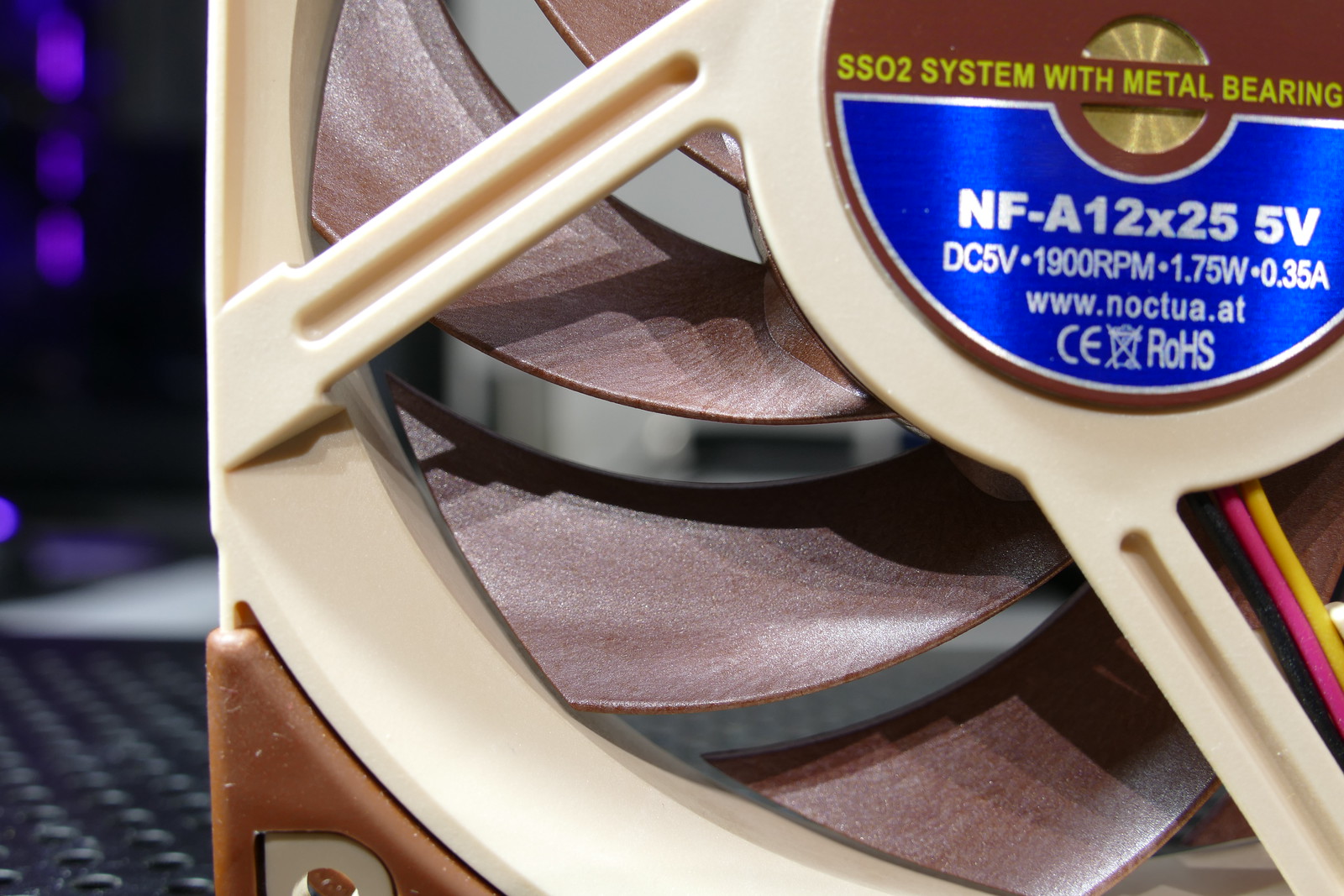Call me crazy, but I've fallen in love with a cooling fan.
The Noctua NF-A12x25 (link to standard PWM version for use in PCs) is by far the most technologically advanced fan ever made by the Austrian cooling solutions company. It took four and a half years to develop with more than than 200 prototypes made, and even required the development of an expensive, proprietary plastic material for the impeller. The result is an engineering masterwork of a fan that outperforms anything else like it.
The specific version of the NF-A12x25 I have is the 5V model. While this means that it's not directly usable in most PCs, as fan headers are typically 12V, the 5V version comes with a USB adapter, which opens up endless new possibilities. One can now use it to cool practically anything, from set-top boxes to mini-fridges (that was my idea). This particular model, along with several other 5V fans spanning nearly the entire Noctua lineup from 40mm to 200mm, was announced on July 4, 2018.
The key to the NF-A12x25's impressive performance is a proprietary liquid-crystal polymer called Sterrox. LCPs are a unique class of plastics which exhibit very high rigidity and strength due to their molecular structure, which is more orderly than those of traditional plastics. Noctua went through the trouble of developing their own plastic material because a key design goal was to minimize tip clearance: the spacing between the tip of the impeller blades and the frame. With conventional plastics like PBT, over several years of continuous use, the blades can actually stretch slightly, which means there needs to be some leeway between the impeller and the frame. However, this gap results in some airflow being lost, and in situations requiring high static pressure, like a fan attached to a processor heatsink or liquid cooler radiator, air can leak back through this gap. LCPs like Sterrox exhibit far better stability over time and therefore allow for a much narrower tip clearance, as little as 0.5mm, when most PC case fans have closer to a 1.5mm to 2mm gap. (Notice, in the image above, just how close the blades are to the frame!) The high rigidity of the Sterrox material also makes the fan blades less prone to surface vibrations which can create added noise during operation.
